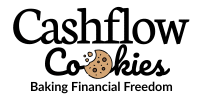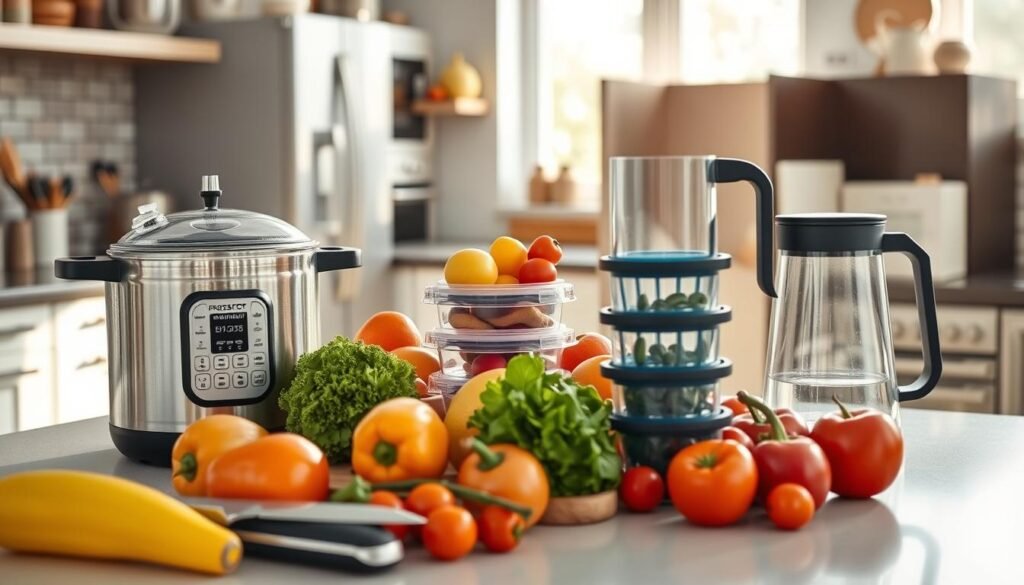Imagine your finances as a well-stocked pantry – with the right ingredients, you can whip up something satisfying even on a tight budget. As a mom who’s learned to turn small savings into big wins, I’m excited to share strategies that work like your favorite kitchen shortcuts: simple, effective, and surprisingly rewarding.
This isn’t about cutting corners or missing out on life’s flavors. Think of it as choosing quality over quantity – like swapping pricey pre-cut veggies for whole produce you prep yourself. You’ll discover how tracking expenses can be as routine as meal planning, and why knowing the difference between “want” and “need” is like learning to spot ripe avocados at the grocery store.
We’ll explore smart ways to stretch your dollars without feeling stretched thin. From decoding sales cycles (they’re more predictable than a toddler’s nap schedule!) to repurposing leftovers creatively, these methods helped my family save for rainy days while still enjoying sunny ones.
Key Takeaways
- Small daily choices create lasting financial change, like consistent seasoning improves a dish
- Track spending as easily as you track favorite recipes
- Smart shopping strategies work better than extreme couponing
- Build habits that grow savings automatically over time
- Focus on value alignment rather than strict deprivation
Introduction to Frugal Living
Picture your budget like a trusted recipe book – the best results come from using what you have wisely. Frugality isn’t about scarcity; it’s about savoring life’s richness through smart choices. Just as a skilled baker knows when to splurge on vanilla beans versus using extract, this approach helps you allocate resources where they matter most.
What is Frugality?
Think of it as your financial spice rack – using the right ingredients in proper amounts. A frugal lifestyle means stretching dollars like dough: gently, intentionally, and without waste. It’s choosing store-brand baking soda that works just as well as name-brand, then using those savings for real chocolate chips.
My grocery list epiphany came when I realized generic oatmeal tasted identical to the fancy-packaged kind. That’s frugality in action – spending consciously so you can afford both necessities and meaningful treats. It’s not about deprivation, but about making your money work harder than a stand mixer on high speed.
Benefits of a Frugal Lifestyle
Adopting these habits is like meal prepping for financial success. You’ll:
- Reduce money stress (no more “mystery charges” surprise)
- Create space for priorities – like family trips or debt repayment
- Develop sharper decision-making skills than a chef’s knife
When I started tracking expenses like recipe measurements, we saved enough for a weekend cabin trip. That’s the sweet spot – living fully while spending thoughtfully. As my grandma used to say while canning tomatoes: “Waste not, want not.” Her preserved summer harvests taught me more about value than any finance textbook ever could.
Embracing a Frugal Mindset
Think of your budget as a kitchen garden – nurture the right habits, and you’ll harvest savings naturally. This approach isn’t about pinching pennies till they scream, but rather cultivating awareness like you’d tend tomato plants. I learned this when switching our streaming subscriptions to annual payments – that initial “ouch” moment blossomed into $90 yearly savings, enough for my daughter’s art supplies.

Mental Shifts for Smart Spending
Instead of saying “We can’t afford pizza night,” try asking: “Would this money better fuel our camping fund?” That simple reframe helped us save for a National Parks trip last summer. It’s like tasting soup before adding salt – pause to assess what’s truly needed.
View purchases as ingredients in your life’s recipe. Would that impulse buy add flavor like vanilla extract, or sit unused like fancy saffron threads? When my son begged for a $50 toy robot, we calculated how many library books that could “buy” instead. He chose six weeks’ worth of stories.
- Swap “I deserve this treat” with “Will this nourish my future self?”
- See saved dollars as rising dough – growing quietly in value
- Practice the 24-hour rule: let potential purchases “simmer” before buying
My aha moment came while comparing coffee costs. Brewing at home ($0.25/cup) versus daily café trips ($4.50) saves $1,500 yearly – enough for our family beach weekend. As my neighbor says while sharing zucchini from her garden: “Abundance grows when you mindfully tend what you have.”
Frugal Living Tips for Beginners
Think of your budget as a spice rack – organizing essentials prevents flavor overload. Just as you wouldn’t use cumin when a dish needs cinnamon, smart spending means matching resources to priorities. My turning point came when I realized our “miscellaneous” category was swallowing cash like a black hole.

Quick Start Strategies to Save Money
Start by sorting expenses like separating flour from powdered sugar. Needs (rent, groceries, gas) form your base ingredients. Wants (streaming services, fancy coffee drinks) are the sprinkles – nice but non-essential. When I color-coded our spending, we discovered 18% of our income was funding “sprinkles.”
Try the simmer method for purchases: let potential buys bubble on your mental back burner for 24 hours. That $75 sweater? After sleeping on it, I realized I had three similar ones. This pause helped our family save money equivalent to a month’s electric bill last quarter.
Create a spending journal – no fancy apps needed. My notebook system revealed we were spending $12 weekly on forgotten app subscriptions. Cutting those felt like finding cash in last season’s coat pocket.
Set up automatic savings transfers, even small amounts. Think of it like preheating the oven – preparing for future needs. Our $20 weekly transfers grew into a $500 car repair fund in six months. As my aunt says while freezing garden herbs: “Little bits preserved regularly fill the jar faster than you’d think.”
Smart Home and Household Savings
Your home operates like a well-stocked kitchen – with strategic planning, you’ll always have the right ingredients for financial success. When I spotted paper towels at 60% off last fall, I bought enough to fill our laundry shelves. This “pantry approach” works for anything non-perishable: think cleaning supplies, toothpaste, or pasta sauce jars waiting to become spice containers.
Budget-Friendly Home Essentials
Treat sales like harvest season – stock up when prices drop. I keep a price book for household items, noting rock-bottom costs for everything from trash bags to lightbulbs. When hand soap hits $1 per bottle? That’s my cue to buy six months’ worth. Just like freezing summer berries, this method keeps your budget from spoiling.
Create an inventory system using notes on your phone. Mine looks like a recipe index: “Shelf 3: 12 rolls paper towels, 6 dish soap refills.” This prevents buying duplicates – no more finding three ketchup bottles buried in the pantry.
Reusing and Recycling for Savings
Old t-shirts become dust rags faster than you can say “fabric softener.” Takeout containers transform into lunchboxes, while glass jars organize everything from rice to hair ties. My favorite money-saving hack? Those “free” plastic utensils from delivery orders become picnic supplies or emergency desk snacks.
YouTube taught me to fix leaky faucets and squeaky doors. It’s like following a cooking tutorial – simple steps save $100+ service calls. As my handywoman neighbor says while tightening loose screws: “A little maintenance prevents big bills later.”
Effective Grocery Shopping Ideas
Think of your grocery list as a chef’s mise en place – every ingredient prepped and positioned for success. My game-changer came when I stopped treating food shopping like a scavenger hunt and started approaching it like a strategic recipe. Why pay full price for vanilla beans when another store has them half-off this week?
Meal Planning for Maximum Savings
Store loyalty works for sports teams, not grocery budgets. I rotate between four stores monthly like a restaurant sourcing premium ingredients:
- Warehouse clubs for shelf-stable items (think rice, spices, olive oil)
- Discount produce markets for seasonal fruits/veggies
- Local butcher for meat sales (freeze extras in meal-sized portions)
- Online retailers for specialty items – compare prices while sipping coffee
My weekly meal plan starts with store flyers, not cravings. When chicken thighs hit $0.99/lb, they become three meals: grilled entrées, stir-fry fillings, and soup stock starters. This approach helped us slash our food spending by 30% – savings that now fund our summer camping trips.
Download your store’s app – those digital coupons are like finding money in your apron pocket. Last month, I stacked a 20% off promo with a cash-back offer to get premium coffee beans for less than store-brand. Pro tip: Check expiration dates before buying sale items. That “bargain” 5-lb cheese block isn’t a steal if half goes moldy.
Managing Credit and Budget Effectively
Think of your credit cards as kitchen appliances – powerful tools when used properly, but capable of creating disasters if mishandled. My family’s $5,000 vacation savings came from treating credit accounts like my stand mixer: only turning them on for planned recipes, never leaving them running unsupervised.
Using Credit Wisely
I swipe plastic like I add cayenne pepper – strategically and with measurement. Choose credit cards that match your spending habits like pairing knives with ingredients. Our grocery card earns 3% cash back, while our gas station card gives rotating quarterly bonuses. But here’s the secret: rewards mean nothing if you carry balances.
Set up autopay for minimum payments as your safety net, but aim to clear balances completely each month. When my sister forgot a payment, the $38 late fee erased six months of rewards. Now I check due dates like I check oven timers – twice.
Creating a Realistic Budget
Your budget should work like a favorite soup recipe – flexible enough to adjust ingredients, but structured enough to nourish. Track actual spending for 30 days before setting limits. We discovered 12% of our income was vanishing into snack-sized purchases – the financial equivalent of nibbling cookie dough while baking.
Use apps like You Need A Budget (YNAB) or a simple spreadsheet. I color-code categories like my spice drawer: green for essentials (mortgage, utilities), yellow for flexible costs (groceries), red for treats. This visual system helped us reduce credit card reliance by 40% in three months.
Remember what Grandma taught me about pie crusts: “Leave room for the filling to expand.” Build buffer categories for unexpected costs so you’re not forced to reach for plastic when life gets messy.
Time-Saving Money Hacks
Think of your time and money as ingredients in a slow-cooker recipe – the right timing transforms basic elements into something greater. My strategy? Let online retailers do the work. Leaving items in my cart for 24 hours often triggers discount codes – like when Target sent 15% off after I “forgot” patio cushions. It’s the digital equivalent of letting soup simmer to deepen flavors.
I treat coupon hunting like checking pantry staples – quick and routine. Before checkout, I spend five minutes on Honey or RetailMeNot. Last month, this tip saved $42 on school supplies. Seasonal timing works too: buying swimsuits in July scored me deals sharper than my kitchen shears.
Batch tasks to save both time and money. I compare prices while waiting for pasta water to boil. Price alerts on phone cases? Set them like oven timers. When our blender died, an alert notified me of a 40% drop – patience saved $60.
My golden rule: let big purchases marinate 48 hours. That $150 coat? After two days, I realized my old one just needed new buttons. Like tasting stew before adding salt, waiting reveals what truly matters. As my baking mentor says: “Good things come to those who preheat.”


